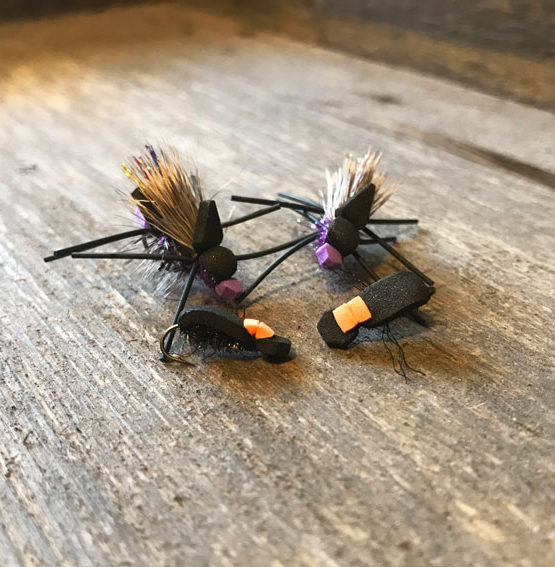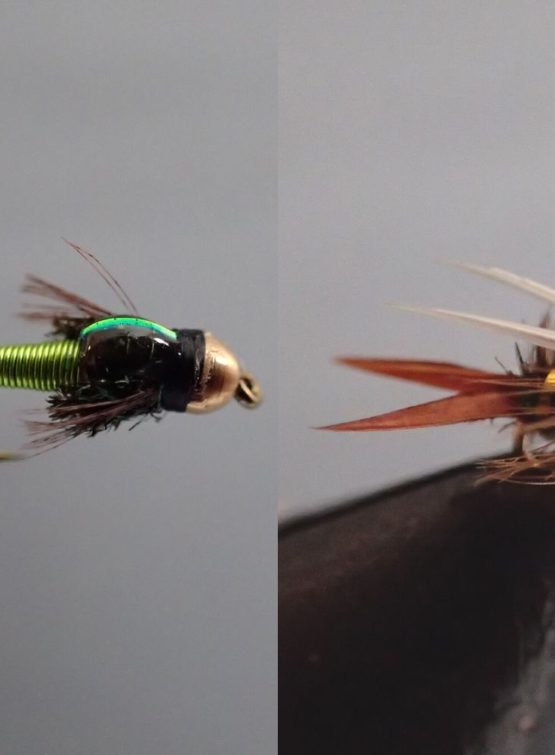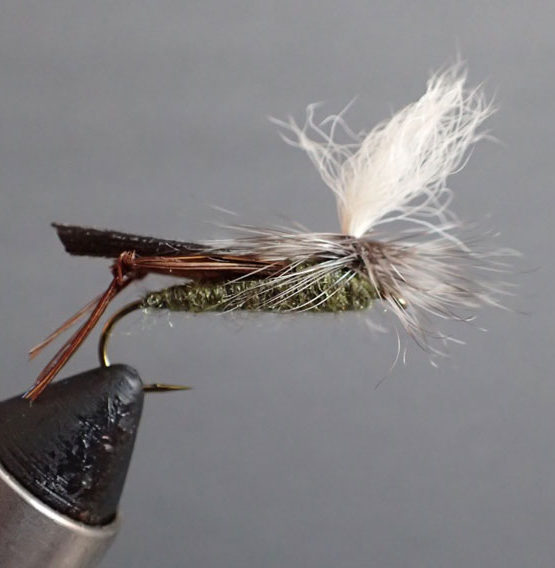Not sure how much you should spend on a new fly rod? You’ve landed on the right blog.
Making some assumptions about how you arrived at this site and article, it’s likely that you fall into one of three fly rod shopper categories: 1. You might be considering taking up the sport of fly fishing and don’t yet have a rod. 2. You’re ready to step up to a new and better rod, but haven’t ventured into the fly rod market in awhile. 3. You’re seeking that perfect and memorable gift for the special fly fisher in your life but don’t know where to start. Regardless of your motivation, we know that, even for the more experienced angler, buying a fly rod can be an intimidating venture. With that in mind, this post will help you answer the question: how much should I spend on a fly rod?
For a new fly rod alone, you should expect to spend a minimum $150. Many manufacturers carry decent lower-priced rods in that price range. That said, as a beginner, you may want to purchase a rod/reel combo. If so, you should be prepared to spend around $175 to $250.
Of course, that’s just the starting line, as more advanced fly rods come in at about $300 to well over $1,000 for something in the custom arena. Knowing that shouldn’t scare you because, while the adage, “you get what you pay for” certainly comes into play, fly rod manufacturers have done a terrific job producing a wide variety of strong, reliable, high-performance rods in nearly every price range. And, take it from a guy who probably places way too much value on look-neat factor, they’ve done so in a rather aesthetically pleasing way too!
But since there are so many good fly rod brands, lengths, strengths, styles and configurations, it’s difficult to boil them all down into just a few recommendations. Perhaps the best way to do so is to offer our guidance on what you should look for in a standard rod configuration, as a beginner, as an intermediate and, although most in this category know exactly what they’re looking for, as an expert.
We will also offer a few recommendations for each level.
Lastly, because we think you may be among the best, most generous, super-coolest people on the face of the planet, we will also provide sage counsel for those of you in the fly rod gift-giving mode as well.
Without further ado, let’s dive in!
Disclaimer: This post may contain affiliate links, meaning we will receive a small commission (at no cost to you) if you click through and make a purchase.How Much To Spend On A Fly Rod (For The Beginner)
As a fly fishing beginner, we believe you shouldn’t concern yourself with more than four primary fly rod considerations: length, line weight, flex and cost.
Let’s start with cost.
Although we can’t, in a million lifetimes, imagine that someone who commits to taking up the sport of fly fishing would wind up not liking it, we hear that it does happen from time to time. With that remote possibility in mind, the beginner should try to keep initial costs down. To get started then, it might be in your best interest to borrow a friend’s rod, find a used rod online or hunt one down at a garage sale.
On the other hand, if you’re my fly rod purchasing doppelgänger and like to buy new, we suggest landing a lower-priced rod or going with a rod/reel combination (also known as an “outfit”) package.
With fly rod technology having come so far, the combo is a great way to go, especially if you want your own rod and reel. Most rod/reel combos are designed to meet the needs of the beginning angler and, as a take-the-guesswork-out-of-it bonus, usually come with your first line and line backing already spooled on the reel. Easy-peasy, lemon-squeezy.
When it comes to length, line weight and flex, the generally-accepted, middle-of-the-road, most versatile stick for a variety of situations and conditions is a 9 foot, 5-weight, mid-flex rod. Go with this configuration as your beginner rod, and you’ll be good to go while your skills develop. Once they have, don’t be surprised if your lower-cost beginner rod takes on go-to, legendary status in what will undoubtedly become your multi-rod arsenal.
Beginner Fly Rod Recommendations:
- Rod Alone: Redington Classic Trout Fly Fishing Rod
- Rod Alone: Orvis Clearwater Fly Fishing Rod
- Combo: Orvis Clearwater Fly Fishing Rod and Reel Combo
- Combo: Temple Fork Outfitters NXT Black Label Fly Fishing Combo
How Much To Spend On A Fly Rod (Intermediate Angler)
By the time you reach intermediate level, we’re pretty dang certain that your fly fishing addiction will have taken firm root. Without delving into its assorted forms, we know that, at this stage, you’ve become a voracious studier of fly fishing and all of its captivating facets. Along with that, you’ve become aware of your desire for new and better equipment and, in particular, an overwhelming need to scratch your new fly rod itch.
Kindred spirits, we can only advise that you go ahead and scratch away!
That noted, as an intermediate, your next rod purchase will likely take you one of three ways. (That’s not to say that it won’t take you all three of the following ways at once. I mean, who are we to judge?)
1. Replacing your beginner rod:
Here’s how the mental gymnastics tends to go: I learned how to fish with my first rod. I like it. I’ve caught quite a few fish with it. It gets the job done. I’m fond of it. Not sure I’m ready to fork out the money to replace it.
And then something like this thought pattern starts to encroach:
But I feel like I’d really benefit from that new… (enter desired rod here). I mean, it’s got that faster action I’m looking for. It’ll be great for dry flies as well as my heavier nymphing rigs. It’s the same length and line weight, but it’s so much lighter and more balanced. I really like how that new cork grip feels. Oh man is it ever a sweet color. After all, it’s not THAT expensive. I work hard. It wouldn’t hurt to treat myself now and again, right?
Once you get to this stage, forget about it.
It’s only a matter of time before you’re excitedly carrying your newly purchased rod — all wrapped and tubed up — out of the store. And that twinge of sadness that your beginner rod has just been relegated to backup status evaporates about three seconds after you get your new beauty home, take it out to admire it and, shortly thereafter, find yourself false-casting it in your living room.
2. Adding a rod weight up:
Instead of replacing your first rod, let’s say you decide to expand your fly rod arsenal with a new rod in a higher line weight — for instance, adding a 6-weight to your existing 5-weight. The main reason you’d want to do this would be based on the type of fly fishing and situation you find yourself engaged in most often.
Adding a rod in a higher line weight generally assumes that you fish larger rivers and lakes with heavier currents or greater depths in pursuit of girthy, hard-fighting fish. It may also mean that you’re using heavier rigs with multiple flies and weights, and that you want a rod that has a little more punch for stronger winds and longer casts.
Don’t assume that this means a bulkier, less responsive rod than your mid-flex 5-weight beginner rod. Quite the contrary, as more advanced rods are designed and engineered to deliver what you seek in typically lighter, highly-balanced rods with stronger butt sections and faster action. Innovative engineering is a wonderful thing, isn’t it?
The best part is that many of these better-performing rods don’t necessarily have to cost you the first year of your kid’s college tuition. In fact, you’ll find that quite a few well-designed, durable, reliable rods come in under $500 while still displaying the aesthetic appeal of more expensive sticks.
You may also choose to add a little length to a higher-weight rod. Although I tend to prefer a 9 foot rod, bumping up to 9.5 foot might provide a little more versatility, reach and punch, but it may take a bit of time to get used to how the extra six inches impacts your cast’s timing and feel.
When possible, we always recommend test-casting different rods, side-by-side, before making your final purchase. Test-casting different rods is even better if you can do so in an active fly fishing situation.
3. Adding a rod weight down:
Alternatively, if you prefer dry fly fishing and find yourself frequenting smaller, shallower waters with tighter casting windows and smaller, more skittish fish, you might opt to add a lighter, shorter, more delicate rod to your quiver. If you go this direction, a lovely 8 to 8.5 foot, 4 or 3-weight rod in a mid- to full-flex configuration would be a great option.
Such a choice will help you deliver more graceful fly presentations while making smaller fish feel much larger in the fight. And just because a rod is lighter and shorter doesn’t mean it won’t cast your fly a country mile. Marry a good casting stroke with a light, responsive rod and it’s a beautiful thing to behold.
Intermediate Fly Rod Recommendations:
How Much To Spend On A Fly Rod (Expert Angler)
The most advanced fly fishers I’ve known and seen could pick up a broken willow branch, add a line and a fly to it and cast it, in the wind, to within three inches of a cross-river target, all while checking their bank balance on their iPhone. For me to think that these folks need any guidance in what kind of rod they might need would be a tad presumptuous, don’t you think?
That said, and when you get to this level yourself, remember that super-expensive does not necessarily equal super-good or even super-reliable. I can’t tell you how often I’ve heard a grizzled vet eschew the idea of buying a new rod just because it’s supposedly the latest and greatest thing to have hit the market. Experts lean toward tried and true. While they love responsive, they swear by reliable, durable and consistent performers. After all, there’s nothing worse than plunking down a load of dough on an expensive, ego-stroking rod that keeps snapping on you at the moment of truth.
In fact, much like soul surfers, many expert anglers will go years without buying a new rod. Why? They love the rods they have, catch lots of fish with them, and wouldn’t think of disrupting the near symphonic relationship they’ve developed between their old faithful rod, hand and arm.
Nevertheless, since this is a post about how much one should expect to spend on a fly rod, my advice to the fly fishing expert is this: buy whatever rod you dang well please!
That said, our recommendations include…
But there are so many more great rods out there!
Fly Rod Purchasing Guidelines for The Gift-Giver
Speaking for the potential fly fishing gift getters among us, I know that fly rods are often given to mark such lofty occasions as, oh, retirement springs to mind. You know, those gold watch, fine bottle of scotch kinds of milestones.
Speaking for all fly fishers ever and anywhere, a new fly rod would be a great thing to get as a gift on more run-of-the-mill celebrations too. I’m thinking: birthdays, holidays, graduations, weddings, Groundhog Days, National Doughnut Days, Tuesdays.
So, for those of you who may be looking to give that important angler in your life a rather special gift, a new fly rod will never be met with disappointment. Instead, expect lavish appreciation, jump-for-joy excitement and maybe a few impromptu cartwheels.
Nevertheless, we understand how intimidating and confusing it can be to try to buy a new fly rod for someone who may be quite particular about the kind of rod they want. So, it may just require a bit of clandestine research on your part.
To start, reach out to their fishing buddies. If we’ve fished with them often, we typically have a good sense of the rods your giftee already owns, what they like, what they need, what they might want or would simply appreciate. More often than not, such a confidante would be more than happy to do some more covert investigation and/or help you execute the secret transaction once the rod of choice has been determined.
If you don’t have that resource at your avail, find times to secretly scout out their equipment and make note of the rod brands, line weights and lengths they already own. Then follow the guidelines above to add a rod from the same manufacturer in either a weight up or a weight down.
Most rods come in a branded tube that, at the capped end, display the rod weight and length. If not, you’ll have to open the tube, unwrap the rod and look for the rod’s weight and length, which is usually written or etched on the first section of rod, just above the corked grip. (Of course, re-wrap and re-tube the rod as you found it.)
As an additional tip, be sure you can return or exchange the rod if your gift receiver needs something a little different than what you gave. Trust me, if this happens, it won’t diminish the reaction you’ll get when your gift receiver gets that festively-wrapped cylindrical package. By the way, I hear you can find National Doughnut Day gift wrap at your local party store.
One more thing. You might ask if it’d be easier to get a gift card and let your special angler pick out their rod of choice on their own. Well, yes, that can work, but seeing them unwrap a brand new fly rod might be a tad more exciting than seeing them pull a gift card out of an envelope.
Your call.
Final Casts
In this post, I wouldn’t be doing my job if I failed to mention a few more important considerations.
Warranties: Most fly rod manufacturers offer excellent warranties, but it’s important to know the specifics thereof. Make it your business to learn the details of things like the breakage and repair process, and always fill out the registration/warranty card (or online registration) immediately. Further, keep a record of your rod registration in a safe place that you won’t forget.
Ratings: As with almost any such purchase, it’s always a good idea to research fly rod ratings. While one bad rating isn’t a deal-killer, if you see the same criticism come up in several, pay attention and, unless the manufacturer has addressed and corrected the persistent problem, move on.
Care: Caring for your fly rods will extend their life. When purchasing, make a point of asking how to best care for your new rod and make sure you do what is suggested. Fly rod care doesn’t vary much from rod to rod, but I always like to know what each rod manufacturer recommends.
One last thing. In this post, we’ve offered only a few fly rod recommendations. But it truly comes down to which rod best suits your specific needs and budget, and which one feels best when you cast it. There are so many good fly rods on the market, it’s almost hard to miss. Do your homework. Shop smart. And scratch that itch! Happy new fly rod hunting and, as always…
Tight Lines!
We hope you’ve enjoyed and benefited from this post. If so, we encourage you to sign up to receive new Fly Fishing Fix posts, recommendations, and other awesome content in your inbox. We have big plans and would love to have you along for the ride!










